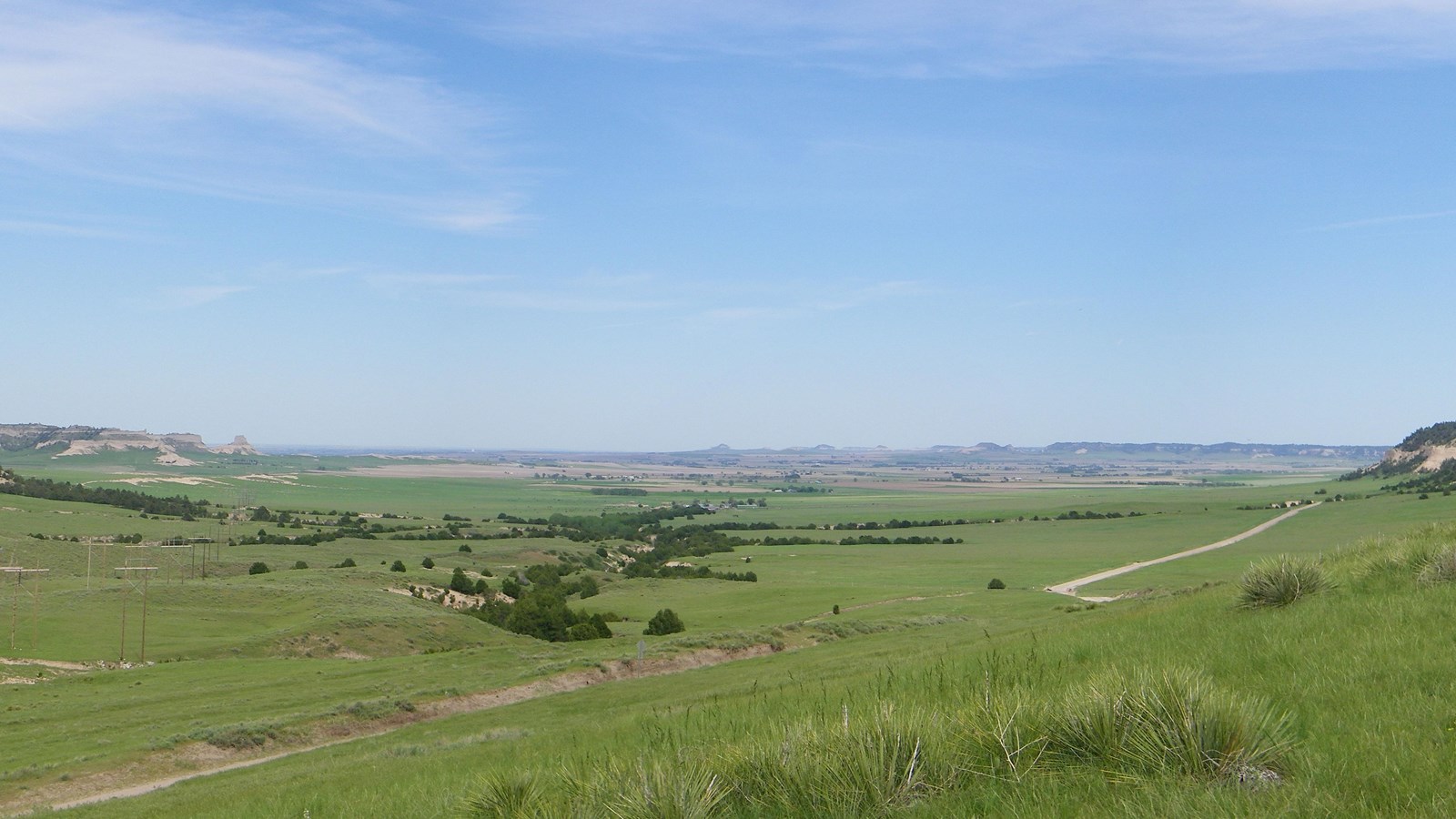Last updated: February 17, 2025
Place
Robidoux Pass

NPS
Historical/Interpretive Information/Exhibits, Scenic View/Photo Spot
History of Robidoux Pass
The earliest travelers to use Robidoux Pass were probably trappers, traders and missionaries who took their pack trains up the North Platte River to the Rocky Mountains in the 1820’s. In 1830, wagons of fur trading cavavans were the first to use the pass and reach the Rocky Mountains, showing the way for the thousands of emigrant wagons to follow. The first wagon train through the pass was the Bidwell-Bartleson Party in 1841. Despite its water and wood, overland travelers were never satisfied with Robidoux Pass because it took them so far away from the North Platte River. A second gap in the bluffs, today called “Mitchell Pass”, skirted the base of the highest promontory and lay closer to the river. Historian Merrill Mathes noted, “Up to and including 1850, the Robidoux Pass route was used almost exclusively by the successive waves of fur traders, missionary parties, soldiers and emigrants. In the year 1851, travel was about equally divided between the two routes. From 1852 onward, Mitchell Pass was heavily favored, although Robidoux Pass was occasionally used.”
Who was Robidoux?
Although all the facts are not fully established, it appears that he was Joseph E. Robidoux, oldest son of the Joseph Robidoux who founded St. Joseph, MO. The other “Frenchman” seen there was his uncle, Antoine Robidoux, who earlier achieved pioneering fame in Utah and California. The younger Joseph may well have been the Robidoux who led the first American Fur Company contingent by Scotts Bluff in 1830.
Old Robidoux Pass
Robidoux Pass is a gap passing through the Wildcat Hills about 9 miles west of Gering, Nebraska. The Pass was the route of the Oregon/California Trail from 1841 through 1850. After 1850, the route passed through Mitchell Pass at Scotts Bluff National Monument. Robidoux Pass has an elevation of 4,554 feet.To use Robidoux Pass, travelers had to swing south away from the North Platte River and proceed nearly 30 miles before they rejoined the river near Horse Creek. Fortunately, springs and nearby cedar trees in the pass provided water and wood for their journey.
Robidoux Trading Posts
The trading post at Robidoux Pass was established by either Joseph or Antoine Robidoux. Traders at this post exchanged goods with Indians for beaver skins and buffalo hides. The post also held a temporary monopoly in providing provisions and services to overland travelers and had a blacksmith shop on site that offered emigrants an opportunity to make repairs to trail-damaged wagons and tend footsore oxen and mules.
There was a second Robidoux Trading Post located in Carter Canyon. It was inhabited by Antonie Robidoux, his Native American wife, and their 5 children. Other trading posts are known to have existed near the pass at the same time as the Robidoux Trading Post. One such trading post was owned by the American Fur Company. Following the opening of Mitchell Pass in 1851, which provided a shorter trail, Robidoux Pass and the trading posts fell into disuse.
What became of Joseph Robidoux?
Joseph E. Robidoux was reported to have died accidentally at Scotts Bluff, but no grave has been identified. There is evidence that he returned to the Great Nemaha Indian Agency in northern Kansas in the late 1850’s and died in obscurity. It is also thought that Antoine Robidoux died in 1860 in St. Louis, Missouri.
Robidoux Pass Today
Today, none of the historic buildings remain at Robidoux Pass. White posts mark the original route of the emigrant trail. Early accounts of the trip through this area note several burials at the site, two of which can still be seen today, including the “Dunn” grave, one of only 7 marked burial sites along the Oregon Trail. Tools, wagon implements, bullets, and other materials have also been found in this area. After the Mitchell Pass route was improved, the Robidoux Pass route faded into obscurity; it was too far out of the way and too far from the water source of the North Platte River.
How To Get There
Today, Robidoux Pass lies on private property, but is still accessible by the general public who are encouraged to respect the wishes and rights of the owners. A gravel road one mile south of the intersection of Five Rocks Road and Old Oregon Trail leads to the site of the old trading post described by a historical marker.
